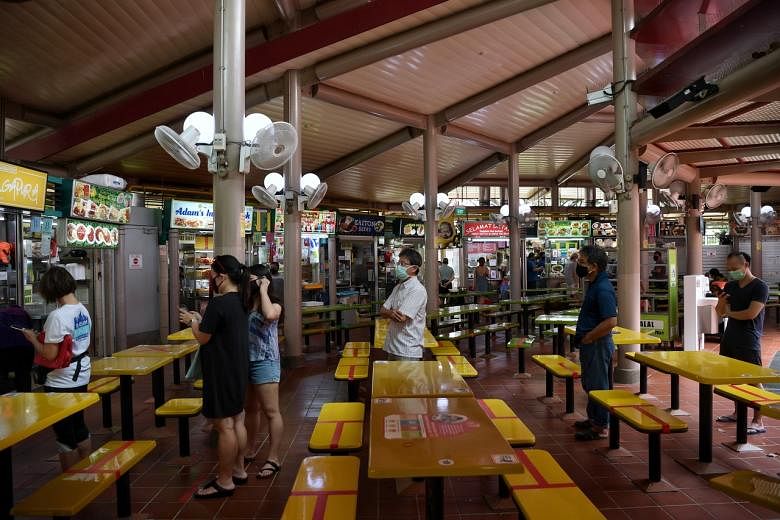If all safe distancing measures were lifted and life were to go back to normal following the end of the circuit breaker on June 1, it is likely that Singapore's efforts to stem the Covid-19 outbreak so far would only have postponed a peak in the number of daily transmissions.
Associate Professor Alex Cook, vice-dean of research at the National University of Singapore's (NUS) Saw Swee Hock School of Public Health, said the virus would be able to re-circulate if there were no more distancing measures, setting the stage for another peak in infections.
To avoid this, Singapore needs to move to "sustainable distancing measures", after the circuit breaker ends. This could entail the reopening of schools, for example, while employees could continue working from home if their workplaces allow for it, he said.
How transmissible a virus is in a population depends on its R0, or the basic reproduction number, said Prof Cook.
"For a virus with a R0 of 2 - which is what we think the Covid-19 virus has - you need to reduce transmissibility by 50 per cent if you want to prevent an epidemic," he said.
"When we impose a circuit breaker, we are reducing the reproduction number from 2 down to 0.8, for example, but only for the period of the circuit breaker," he said.
"If we go back to life as normal after the circuit breaker ends, what's going to happen is that we will see an epidemic of the same size and the same duration, but just pushed further back in time, by a little bit over two months, or the duration of the circuit breaker itself.
"So this approach is not going to reduce the overall number of infections at all. We're going to have the same size of an epidemic, same number of deaths, same number of people in ICU (intensive care unit). All we are doing is pushing it back further and buying a little bit of time."
Prof Cook was speaking in the latest episode of a webinar series organised by the National University of Singapore (NUS), National University Health System and the World Health Organisation's Global Outbreak Alert and Response Network.

Without circuit breakers in place, the virus will be able to spread as rampantly as it did back in the beginning, he added.
-
What is R0?
-
R0 is the basic reproduction number of a virus, and indicates how transmissible the virus is.
If the R0 is equal to two, it means that each existing infection can lead to two new infections and the number of new infections every day is likely to grow exponentially.
If the R0 is less than one, it means that each existing infection causes fewer than one new infection. In this case, the disease will decline and eventually die out.
Professor Wang Linfa, director of the emerging infectious diseases programme at Duke-NUS Medical School, has previously said that the R0 for Covid-19 is estimated to be between two and three, similar to Sars, or severe acute respiratory syndrome.
In comparison, the R0 for measles and the Zika virus are estimated to be at 18 and two respectively, said Associate Professor Alex Cook, vice-dean of research at the National University of Singapore's Saw Swee Hock School of Public Health.
R0, or how quickly the virus transmits from one person to another, is also affected by factors such as the weather, as well as the implementation of social distancing measures, said Prof Cook.
Vanessa Liu
Retaining some distancing measures means that while the basic reproduction number might not be as low as it was during the circuit breaker, it would not be as high as if life were to go back to normal.
In this case, the number of daily new infections is likely to increase at a slower pace, and people can hardly see the epidemic that results, he added.
An expert in infectious disease modelling, Prof Cook had earlier predicted that infections here could reach 10,000 or 20,000 by the end of last month.
Using mathematical modelling, Prof Cook showed audiences the scenarios that could take place depending on the policies that were to be adopted following the end of circuit breaker measures.
The graphs modelled how the number of daily transmissions could rise over the next few months to the end of the year, depending on the different measures taken by the Government after the circuit breaker ends.
"Mathematical models are grounded in our scientific epidemiological understanding of the pathogens, society and how the disease spreads within a society," said Prof Cook.
However, all models are approximations of reality and hence a mathematical model of an epidemic would not be a "perfect representation of how the epidemic would progress over time", he stressed.












